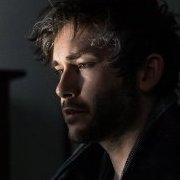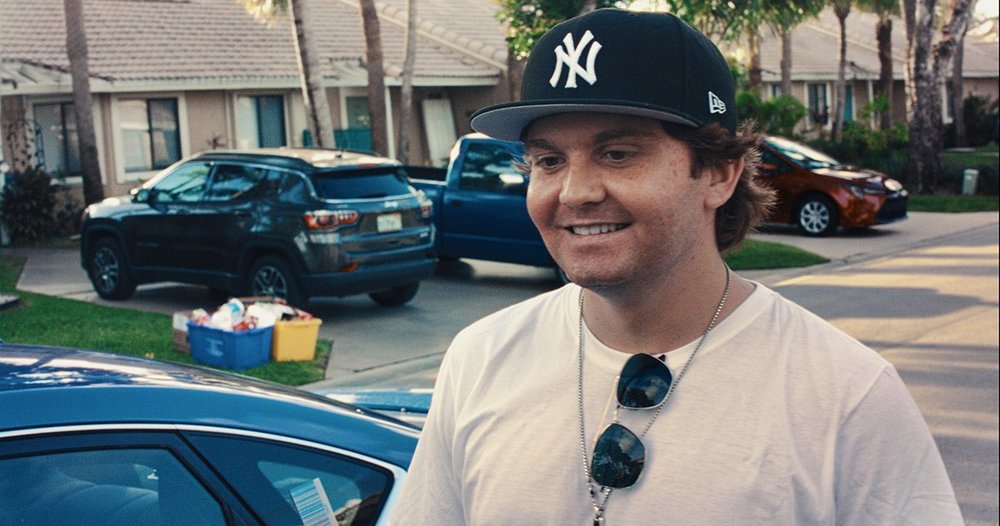-
Posts
48 -
Joined
-
Last visited
Profile Information
-
Occupation
Director
-
Location
Belgrade
Contact Methods
-
Website URL
https://www.youtube.com/@BlackWinterProduction
Recent Profile Visitors
1,923 profile views
-

Green Screen Shutter Angle
Alissa Alexina replied to Justin Allen's topic in Visual Effects Cinematography
A cleanplate is needed for extracting the cleanest possible matte in Nuke VFX software. The process is called image-based keying and it calculates the difference between a greenscreen cleanplate and a greenscreen with actors. It captures the finest details of hair and motion blur. I have recently leaned that the process was developed years ago by Paul Lambert, the Oscar-winning VFX supervisor of Dune. -
Alissa Alexina started following Lens flare in "LUCKY" shot by Tim Suhrstedt , When to use different strengths of Diopters. , Articulating What's Wrong With These Skintones and 7 others
-

When to use different strengths of Diopters.
Alissa Alexina replied to Zack Mahar's topic in Lenses & Lens Accessories
Diopters are not only used for macro, but also for improving the minimum focus of the lenses - essential for working with anamorphics. And since the stronger the diopter, the shorter is the minimum working distance, here the most useful and popular diopter is actually a +0.5 which allows to focus on subjects up to 2m away. For instance, a +1 diopter can focus up to 1m, a +2 can focus up to 50cm and a +4 can focus up to 25cm (which is very limited - I once used it to film a macro shot of the actor's eyes and the lens almost touched his nose). -

Articulating What's Wrong With These Skintones
Alissa Alexina replied to Max Field's topic in Post Production
Definitely, if the person is standing next to foliage, it can give a green colour cast on the skin which requires magenta tint compensation either in-camera or in post. Also, you can try using a polarizer filter during shooting to reduce hotspots and reflections on the face (but a proper make-up is still better, if possible). In grading, I would never key out skintones and would instead rely on proper colour management (like working scene-referred in Resolve), while balancing the shot for the skin. The standard Rec.709 conversion IMHO does not look good even with Alexa though, with low contrast and garish colours (especially noticeable with greenish and oversaturated skin and green grass and trees). Many professional colourists prefer to use some kind of print film emulation and subtractive saturation to get more pleasing results, however some shots can be difficult to fix in post without some masking. Perhaps a big negative fill while shooting would help with boosting contrast and taking away some foliage reflections? -
Saw the movie in IMAX and enjoyed it a lot, very entertaining and atmospheric. The de-ageing VFX are very well done; somehow I expected just a short flashback and was surprised to see a whole long prologue sequence set in 1940s. I think using old anamorphic lenses (Panavision C- and T-Series according to imdb) and film emulation with a grain pass helped a lot with smoothing the CG imagery. It was great seeing old favourites back in action. Helena's character felt annoying and not very convincing, however. Loved the art direction and choice of music in 1969 scenes. I still wish it were shot by Speilberg, good film but missing a little bit of his magic.
-

Do some of Red's OLPFs use some kind of diffusion?
Alissa Alexina replied to Sean Spain's topic in General Discussion
I heard of special third-party diffusion OLPF for RED: https://store.kippertie.com/product/diffusion-olpf/ Interestingly, they have several style options, even imitating classic net diffusion (wonder how they do that..). -
Just watched The Batman yesterday on a big projector screen. The story is weaker than Nolan's, logic-wise, but the actors are just as great, so I enjoyed it a lot. The cinematography is stunning, the strong composition makes every frame a painting. The focus-puller must be a magician dealing with a razor-thin DoF. I have never seen a film with such a shallow DoF, and even completely defocused shots - the style certainly not suitably for every film. But here it just works perfectly. Amazing bokeh and flares create beautiful backdrops and make the characters stand out. I really like the analogue film grain process, the same Greig Fraser used on Dune - the texture is subtle and pleasant. While I strongly disapprove desaturated colours in Dune, here the (real analogue) bleach bypass serves the grim story and looks fantastic. What I like best is the dark, rainy mood and foggy atmosphere - so strong I felt like it was raining right in the room.
- 18 replies
-
- the batman
- alexa lf
- (and 7 more)
-
Saw it yesterday on a big screen, and love it! A simple family story told in such a beautiful, magical way. The actors are amazing. Shot on film, the lighting and colors are fantastic. Lovely texture - rich contrast combined with soft glow and halation, light grain and heavier 8mm and 16mm grain. I was not able to watch Spielberg's/Kaminski's previous film in a theatre due to the pandemic, and the digital copy of "The West Side Story" looked a bit strange, as if slightly tinted yellow-greenish. But the Fabelmans look perfect. The camera is a great storytelling tool here - live and dynamic, but never calling attention to itself. Right until the last moment, with a nod to the horizon reframing advice by John Ford ? This is probably the best ending among all Spielberg's movies for me.
-
Atlas Orion are (relatively) low-budget anamorphic lenses, very well-known among DIY/indie filmmakers; and it came as a big surprise when Linus Sandgren used them on "Don't Look Up! (2021). The trailer for Babylon is intriguing - colourful widescreen is certainly an unusual choice for a movie set in 1920s. General art direction looks nowhere near historical to me, but overall it is probably a lot of fun!
-
I am going to run to the theatre because of the David Lynch cameo alone ? Really looking forward to this film, the cast, the story, the cinematography by Kaminski who is one of my favourites. Thanks David - interesting to hear about GlimmerGlass filters, I think they produce especially beautiful halation (1 and 1/2 strength are always in my bag).
-

Why actors' faces in some new films look so waxy?
Alissa Alexina replied to Petr Kvapil's topic in General Discussion
According to imdb, Elvis was shot on 65 mm film.. The trailer indeed looks a bit weird. I would not trust it too much for the final look, knowing that trailers are often cut with unfinished VFX and colour grading. Interesting. -

Lens flare in "LUCKY" shot by Tim Suhrstedt
Alissa Alexina replied to KH Martin's topic in General Discussion
That's my favourite type of flare! And by the way, the hardest to emulate digitally. Even the most organic-looking digital flares (by the Optical Flares plugin) require lots of tweaking the softness and colours and still do not come close to the real thing. It is way better to use real lenses or ring flare footage. I read they added spherical ring flares in post production for Mank (2020), which look great, however no idea if they are purely digital or filmed footage. Easier to emulate in black and white though. -

Footage shot in 50p, 24p timeline, lip sync issues !
Alissa Alexina replied to Lewis Hart's topic in General Discussion
Normally for music videos, to have the slo-mo effect while keeping the performance lip sync, you need to film the performers singing to a sped-up music track. The best way is to prepare the sped-up track in advance in your editing software to the desired factor (2x, 2.5x etc). Then after shooting you simply conform the 50p or other slow-mo video to the 24p timeline. -

Green Screen Shutter Angle
Alissa Alexina replied to Justin Allen's topic in Visual Effects Cinematography
One of the secrets of good keying is shooting cleanplates if possible - the greenscreen background without actors. The best way of dealing with frizzy hair, defocus and motion blur is Nuke IBK keyer that can precisely subtract the background using a cleanplate; almost always VFX artists have to recreate cleanplates digitally (through a tedious cleanup process), but a real cleanplate is much more preferable. Learned this technique from from Andrey Savinsky, lead compositor artist at Framestore. -
Well I love flares, and chroma ring flares and anamorphic flares especially - it is part of the film texture, like grain and halation. To me, texture is just as important as colours, without it a film would have a flat lifeless 80s videotape look just with more pixels. I guess it is subjective as different people have different sensitivity to texture. For instance, I have flawed eyesight, and see flares, rainbow rings and streaks everywhere in real life, every streetlight looks so beautiful - so it contributes to that sensitivity. A flare can also be a great dramatic device, the best example found in Tess (1978) and others that come to mind are in Chinatown (1974) and Dressed to Kill (1980), and in any action film when they are used to draw attention to a weapon. Again, very subjective, but I share Sandgren's vision ?







